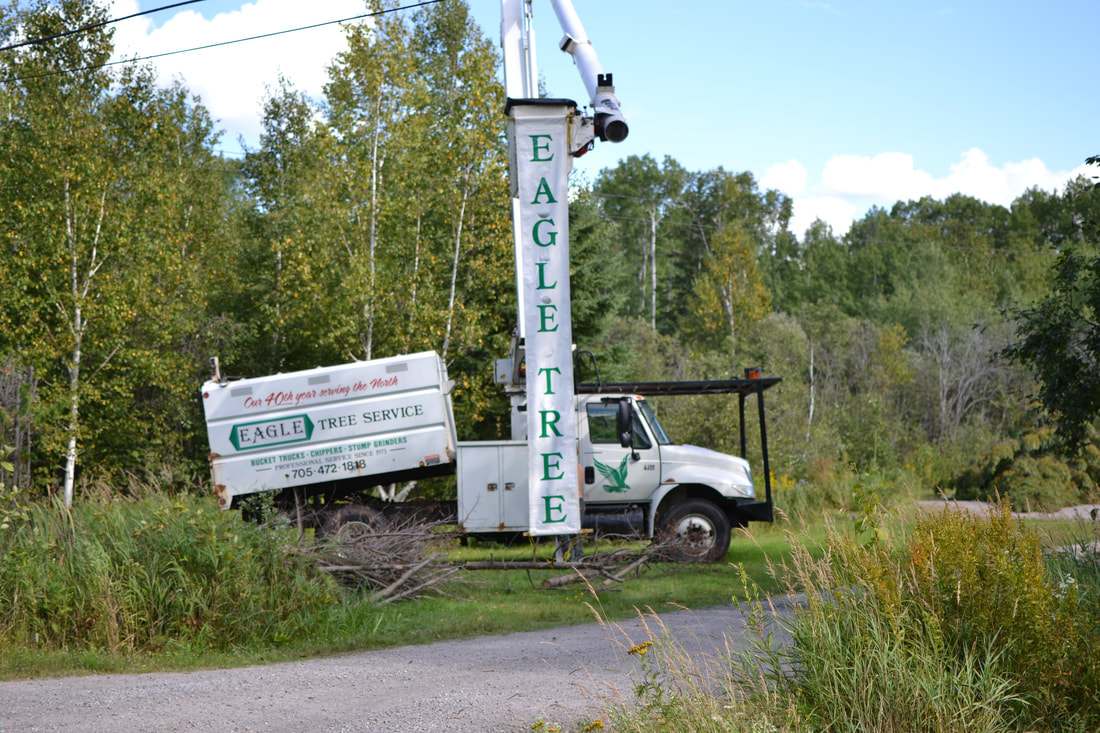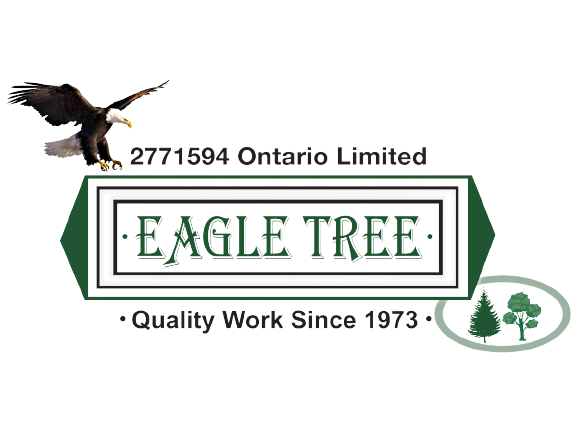When is the best time to trim or prune trees, bushes or cedar hedges?
Expert Advice from the certified arborists at Eagle Tree in North Bay, ON
Knowing the right timing can be crucial for the health of your plants/trees & shrubs and the aesthetic beauty of your landscape. Let’s dive into this and offer you the expert insights you deserve from your local certified arborists.
1. Trees: Timing Makes a Difference
General Rule: Late winter to early spring, when trees are dormant, is often the ideal time.
Why: During this period, the tree is in a rest phase before it bursts to life in the spring. The lack of leaves allows you to see the branches clearly, ensuring precise cuts. Plus, wounds from cuts will heal faster in the spring when growth resumes.
Exceptions:
2. Bushes & Shrubs
General Rule: It largely depends on the blooming time.
Spring Bloomers: Think of azaleas, rhododendrons, and forsythia. Prune these right after they've finished blooming. Cutting them in winter or early spring might remove the buds set to bloom that year.
Summer Bloomers: These can be pruned in late winter or early spring. Examples include butterfly bushes and rose-of-Sharon.
Non-flowering Shrubs: Best trimmed in late winter to early spring.
3. Cedar Hedges: The Evergreen Pruning Guide
Cedars are evergreens, meaning they keep their foliage year-round. While they can technically be trimmed at any time, some periods are more optimal than others.
Best Time: Late spring to early summer. By this time, new growth from the spring flush is noticeable, but the intense summer heat hasn't set in, which can stress the plant if pruned too late.
Avoid Late Fall/Winter Pruning: While some mild trimming is okay, avoid heavy pruning during this time. The plant is preparing to go into dormancy, and significant cuts can make it vulnerable to winter damage.
Benefits of Timely Trimming:
At Eagle Tree, we pride ourselves on not only providing top-notch tree services but also educating our community. If ever in doubt, remember it's always good to consult with a professional arborist. Your trees and plants are investments in the beauty and value of your home, so treat them with the care they deserve.
Stay green and growing!
Best Regards,
Brian & John
Co-Owners, Eagle Tree
Give us a call today for all your tree service needs at 705-472-1818
Learn more about tree removal, trimming and pruning right here.
Eagle Tree
Eagle Tree Company Information
1. Trees: Timing Makes a Difference
General Rule: Late winter to early spring, when trees are dormant, is often the ideal time.
Why: During this period, the tree is in a rest phase before it bursts to life in the spring. The lack of leaves allows you to see the branches clearly, ensuring precise cuts. Plus, wounds from cuts will heal faster in the spring when growth resumes.
Exceptions:
- Flowering Trees: If they bloom in spring, prune them immediately after they finish flowering. For trees that flower in the mid to late summer, winter or early spring is the best time.
- Oak Trees: To prevent the spread of oak wilt disease, it's best to prune oaks in the coldest months, usually December to February.
2. Bushes & Shrubs
General Rule: It largely depends on the blooming time.
Spring Bloomers: Think of azaleas, rhododendrons, and forsythia. Prune these right after they've finished blooming. Cutting them in winter or early spring might remove the buds set to bloom that year.
Summer Bloomers: These can be pruned in late winter or early spring. Examples include butterfly bushes and rose-of-Sharon.
Non-flowering Shrubs: Best trimmed in late winter to early spring.
3. Cedar Hedges: The Evergreen Pruning Guide
Cedars are evergreens, meaning they keep their foliage year-round. While they can technically be trimmed at any time, some periods are more optimal than others.
Best Time: Late spring to early summer. By this time, new growth from the spring flush is noticeable, but the intense summer heat hasn't set in, which can stress the plant if pruned too late.
Avoid Late Fall/Winter Pruning: While some mild trimming is okay, avoid heavy pruning during this time. The plant is preparing to go into dormancy, and significant cuts can make it vulnerable to winter damage.
Benefits of Timely Trimming:
- Promotes Healthy Growth: Proper pruning removes dead or diseased branches, allowing the plant to focus its energy on healthy growth.
- Safety: Dead or weakened branches can become hazards during storms or windy conditions. Timely trimming prevents potential dangers.
- Aesthetic Beauty: Regular pruning maintains a clean, sculpted look, enhancing your landscape's overall appearance.
- Disease Prevention: By removing diseased or infested parts, you can prevent the spread of issues to other parts of the plant or even neighboring plants.
- Improved Fruit and Flower Production: For fruiting and flowering trees and shrubs, timely pruning can often lead to better yields.
At Eagle Tree, we pride ourselves on not only providing top-notch tree services but also educating our community. If ever in doubt, remember it's always good to consult with a professional arborist. Your trees and plants are investments in the beauty and value of your home, so treat them with the care they deserve.
Stay green and growing!
Best Regards,
Brian & John
Co-Owners, Eagle Tree
Give us a call today for all your tree service needs at 705-472-1818
Learn more about tree removal, trimming and pruning right here.
Eagle Tree
Eagle Tree Company Information
Additional Frequently asked questions about "When is the best time to trim or prune trees, bushes or cedar hedges"?
🌳 When is the prime season for pruning trees in North Bay?
- Ah, the perennial question! The best time to prune most trees is during the dormant season, typically from late fall to early spring. 🍁❄️ This timing helps reduce stress on the trees and minimizes the risk of disease infection or insect infestation. However, there are exceptions based on species and health condition, so it's always wise to consult a professional arborist before making the cut.
🌲 Can I trim my cedar hedges at any time of the year?
- Cedar hedges are a bit more forgiving than your deciduous friends. They can be pruned from late spring to early fall. 🌞🍂 Avoid pruning in late fall though, as this can lead to winter burn on newly exposed foliage. For cedar hedges, it's best to trim when the hedge is dry to avoid the spread of disease.
🌿 What about pruning bushes; is there an optimal time?
- Most flowering bushes prefer to be pruned right after they bloom. If you trim them in late winter or early spring, you might cut off the buds that would have bloomed this year. 🌸🐝 For non-flowering bushes, similar to trees, the dormant season is your best bet to promote healthy growth and maintain shape.
🍃 Is there a specific time to avoid pruning?
- Indeed, there is! You should avoid pruning most plants in late summer or early fall because the new growth that pruning stimulates can be damaged by the cold. ❄️🚫 Also, during extreme weather conditions like droughts or heatwaves, hold off on pruning as plants are stressed enough as it is.
🌾 How does the climate in North Bay affect pruning schedules?
- Our unique Northern Ontario climate means that we have to be a bit more strategic about pruning. The cold can come early and leave late, so it's best to complete your pruning tasks by mid-October. 📅❄️ And always remember to give your trees and hedges a good health check-up before winter sets in to ensure they're ready to weather the frost.
Remember, these are general guidelines. It's always a good idea to consult with a local professional to get advice tailored to your specific plants and conditions. Stay green! 🌳
|



